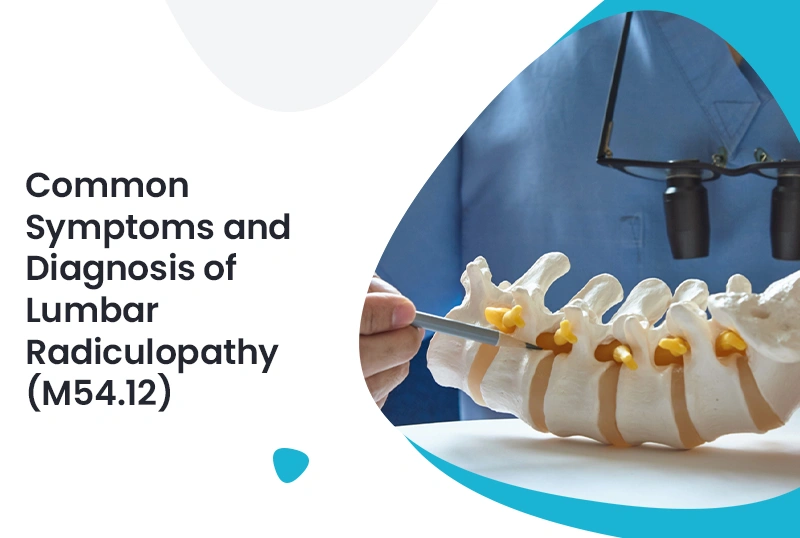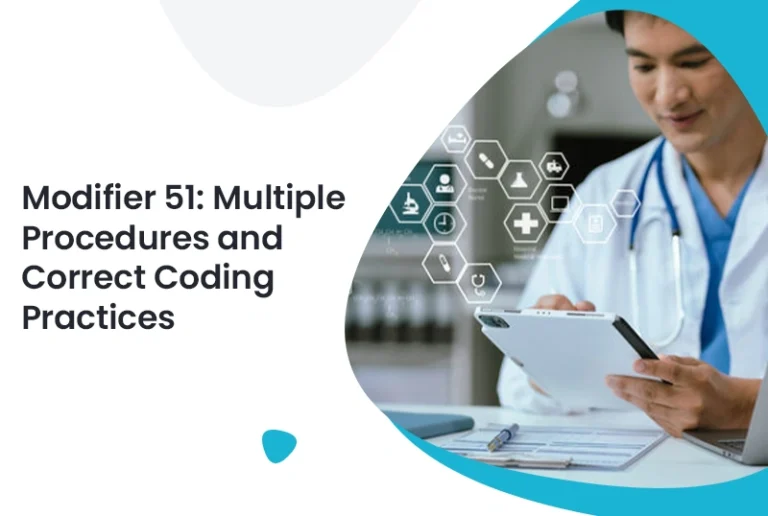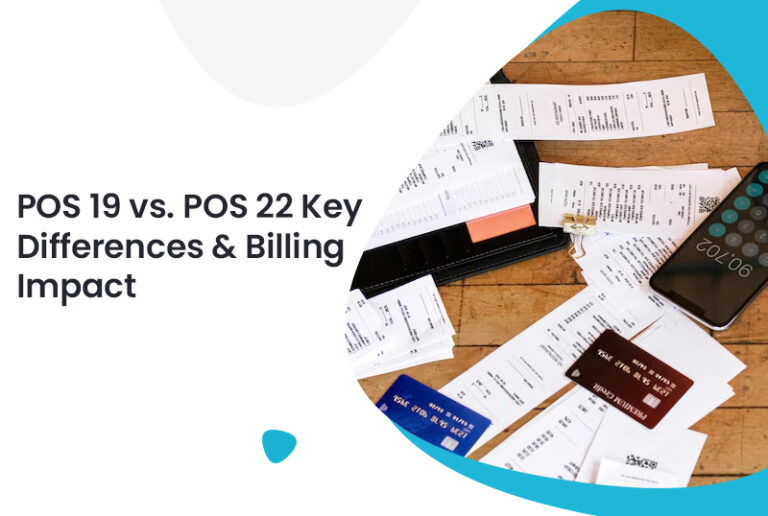Have you ever felt sharp, shooting pain down your leg that just won’t quit? You might be dealing with lumbar radiculopathy, coded as M54.12 in medical billing. This condition, often referred to as sciatica, can be both painful and frustrating. If you’re a medical practitioner or billing specialist, understanding this diagnosis helps not only in patient care but also in ensuring precise claims through proper medical billing service.
What is Lumbar Radiculopathy?
Lumbar radiculopathy occurs when a nerve in the lower back is irritated or compressed, causing pain, numbness, or weakness in the leg. The official ICD-10 code for this condition is M54.12. It is often caused by herniated discs, spinal stenosis, or other spinal degenerative changes.
Common Causes Include:
- Herniated or bulging discs
- Degenerative disc disease
- Spinal stenosis
- Injury or trauma to the lumbar spine
Understanding these causes helps guide treatment and billing procedures, ensuring you capture the correct diagnosis and appropriate CPT codes.
Recognizing the Symptoms of Lumbar Radiculopathy
You might ask, “What exactly should I look for in my patients?” The symptoms of lumbar radiculopathy can vary but often include:
- Sharp, shooting pain radiating from the lower back down to the leg
- Numbness or tingling sensations in the leg or foot
- Muscle weakness or difficulty moving the leg or foot
- Reduced reflexes in the affected leg
Symptoms may worsen with sitting, coughing, or sneezing, which further irritate the compressed nerve. Patients often describe the pain as burning or electric shock-like. Prompt and accurate recognition of these symptoms can lead to timely diagnosis and treatment.
Diagnosing Lumbar Radiculopathy: What You Need to Know
Diagnosis begins with a detailed patient history and physical examination. Ask your patients about pain patterns, onset, and aggravating factors. Then, conduct neurological tests to evaluate:
- Muscle strength
- Sensation
- Reflexes
Imaging and Diagnostic Tests
- MRI scans: The Gold standard for visualizing nerve root compression.
- CT scans: Useful when an MRI isn’t available or contraindicated.
- Electromyography (EMG): Measures electrical activity in muscles and can confirm nerve damage.
Using the right diagnostic tools ensures you document an accurate diagnosis, which is essential for proper medical billing and coding. Incorrect or vague coding can delay reimbursements or trigger audits.
The Role of Medical Billing and Coding in Lumbar Radiculopathy
Accurate billing and coding for M54.12 requires careful attention to detail. The diagnosis must match clinical documentation. Improper coding leads to claim denials or delayed payments, which hurt both providers and patients.
Tips for Effective Billing:
- Use M54.12 precisely for lumbar radiculopathy diagnosis.
- Ensure your documentation supports the severity and specifics of the condition.
- Include relevant CPT codes for diagnostic imaging or therapeutic services.
Working closely with a trusted medical billing service can help your practice navigate the complex coding guidelines, reduce errors, and speed up reimbursements.
Improving Practice Revenue with Revenue Cycle Management Healthcare
Managing claims efficiently goes beyond just coding. Implementing effective revenue cycle management healthcare strategies helps your practice reduce claim denials and improve cash flow. This includes:
- Timely submission of claims
- Regular follow-ups on unpaid claims
- Comprehensive staff training on billing updates
- Leveraging technology to automate parts of the billing process
By combining clinical accuracy with strong revenue management, your practice can maintain financial health while delivering excellent patient care.
Conclusion
Lumbar radiculopathy (M54.12) is a common and painful condition, but recognizing symptoms and diagnosing it accurately can make a big difference. Coupling that with precise billing ensures your practice receives fair reimbursement. Moreover, efficient revenue cycle management healthcare supports financial stability and growth.
By mastering these aspects, you can provide better care for your patients and keep your practice thriving. Need help with billing? Partnering with professionals can simplify the process and maximize your revenue.
FAQs
Q: What is the ICD-10 code for lumbar radiculopathy?
A: The code is M54.12, used for lumbar radiculopathy diagnosis.
Q: What are the common symptoms of lumbar radiculopathy?
A: Symptoms include shooting leg pain, numbness, weakness, and reduced reflexes.
Q: How is lumbar radiculopathy diagnosed?
A: Diagnosis involves patient history, physical exam, MRI, CT scan, and EMG tests.
Q: Why is accurate medical billing and coding important for M54.12?
A: It ensures correct reimbursement and prevents claim denials or delays.
Q: How does revenue cycle management healthcare improve practice finances?
A: It streamlines billing, reduces denials, and speeds up payment collections.







